Building owners and facility managers often find the process of...
Read More- Fire Sprinklers
- Pipe
- Signs & Decals
- Test & Monitor
- FDCs
- Valves
- Fire Hose & Hydrants
- Fire Extinguishers
- Sale
- Blog
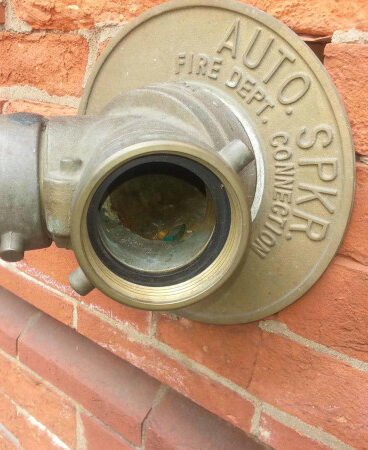
You can find fire department connections (FDCs) in all buildings with standpipes and most with fire sprinkler systems. Located outside the structure, FDCs allow firefighters to connect fire hoses during a fire to supplement or, in some cases, completely supply the water that a fire protection system needs to do its job.
Fire codes require building owners to maintain FDCs, so they work in an emergency. But doing this has some unique challenges since these devices are exposed to the weather, passersby, and vegetation or objects that can block firefighters from accessing them.
This QRFS page is your guide to FDCs, explaining their essential components, the code and maintenance requirements, and how to replace parts or entire FDCs to stay compliant. Feel free to use the table of contents if you’d like to skip to the section you need!
There are various fire department connections that system designers choose based on where they’re installed and the building’s accessibility, size, systems, and water requirements.
Different installation types:
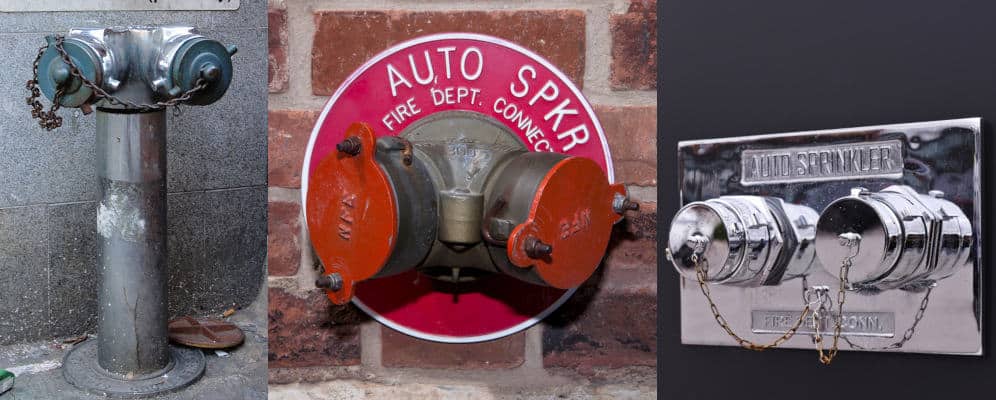
Different numbers of inlets:
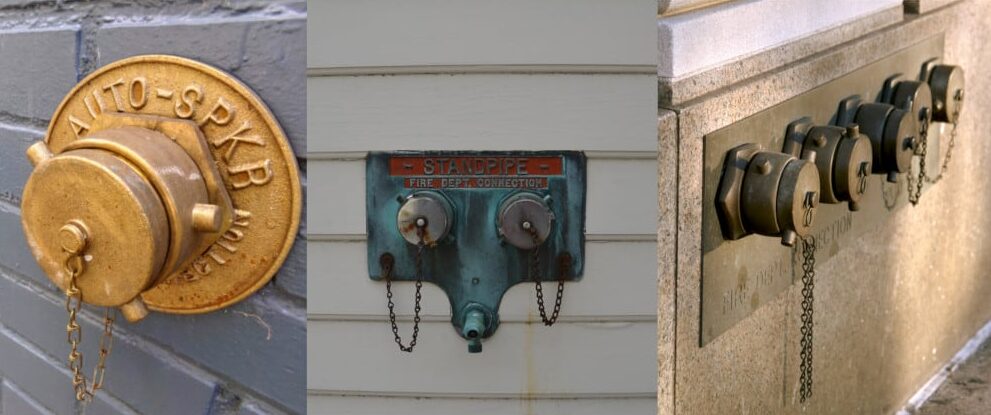
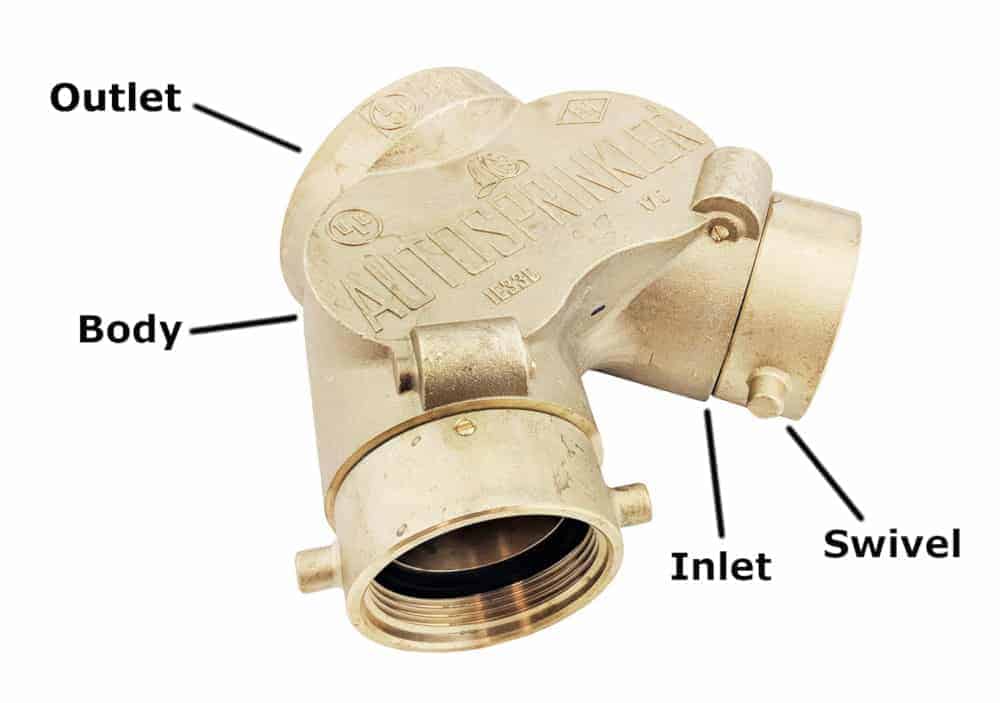
A complete FDC installation includes the pipe that leads from the FDC to the system and a check valve that ensures one-way water flow. But the fire department connection itself has these main parts:
6. FDC caps or plugs cover the swivels and inlets, protecting the system’s pipe from intrusion by foreign objects.
7. FDC plates and signage identify the FDC and the type of system it serves.
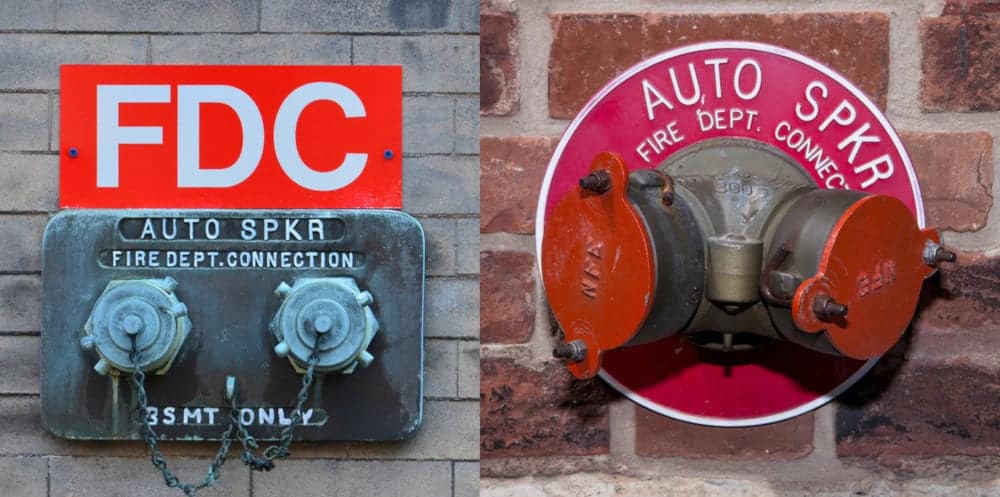
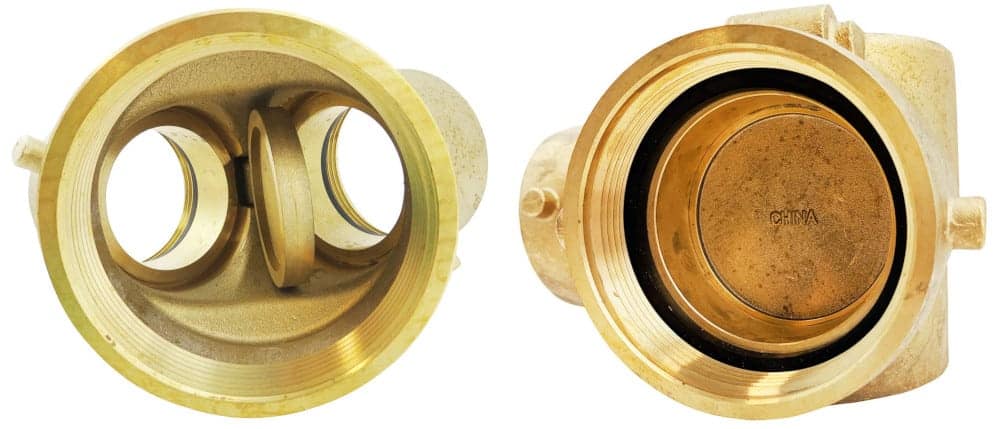
Building owners and facility managers often find the process of...
Read MoreThe fire department connection (FDC) is the access point for...
Read More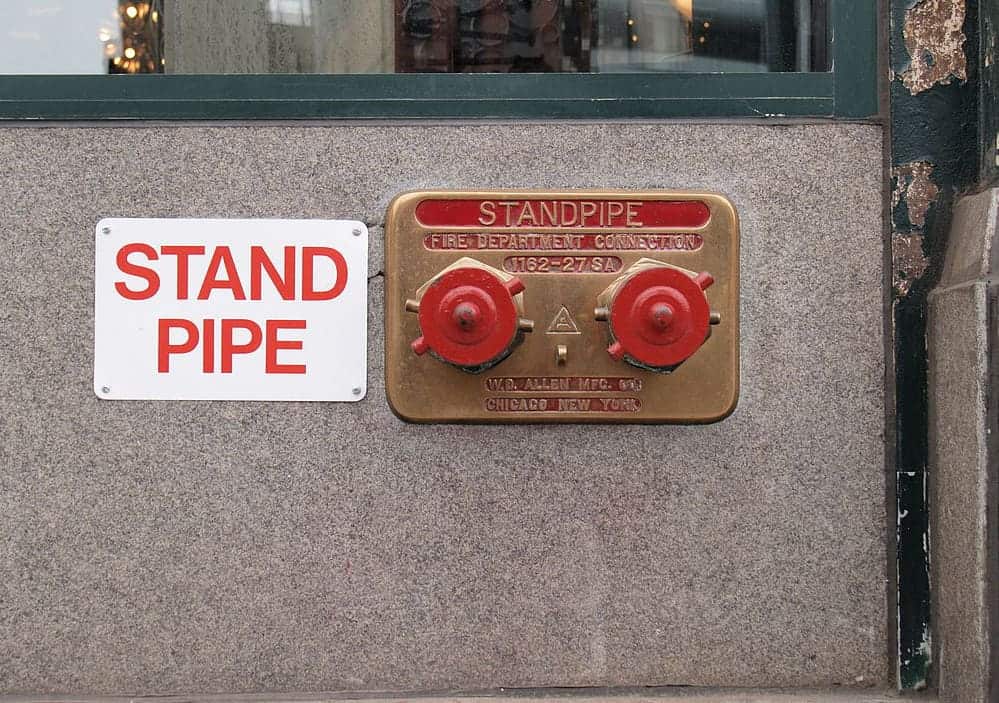
An FDC in New York City with 3” NYFD threads. Image (modified) source: Arnoldius, CC BY-SA 3.0, via Wikimedia
Every second spent connecting a fire hose to a building's...
Read MoreFire Department Connections and their replacement parts must be compatible...
Read MoreIn this article, we dive into thread standards and thread...
Read MoreThere’s good and bad news about maintaining a fire department connection and keeping it up to code. The good: most of the requirements are simple. The not-so-good: since these devices are outdoors, they’re exposed to the elements, thieves, vandals, and possible obstructions, so you have to inspect them reasonably often.
The 10 items of a quarterly inspection make up most of the ITM requirements in NFPA 25: Standard for the Inspection, Testing, and Maintenance of Water-Based Fire Protection Systems:
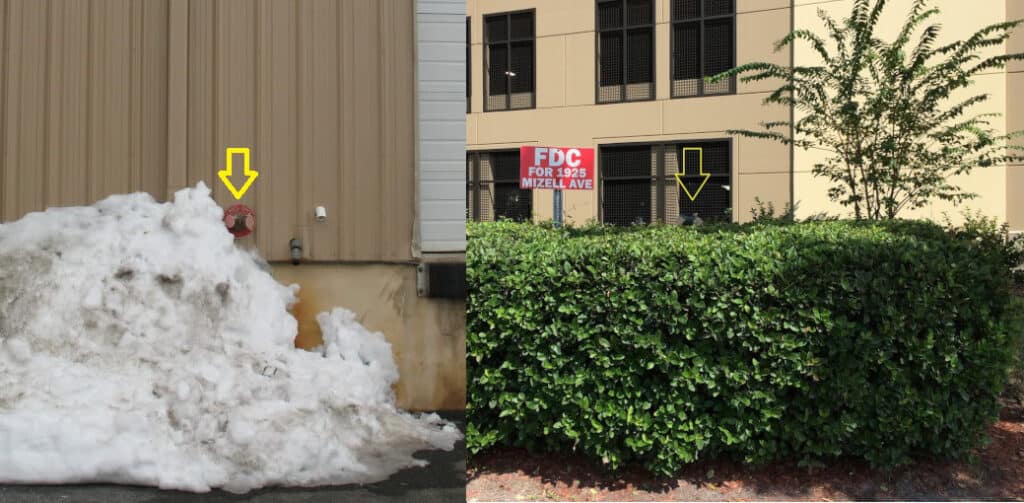 FDCs must be visible and accessible (inspection item #1) — the snow and bushes above are an NFPA 25 violation. Images source: Fire Protection Deficiencies
FDCs must be visible and accessible (inspection item #1) — the snow and bushes above are an NFPA 25 violation. Images source: Fire Protection Deficiencies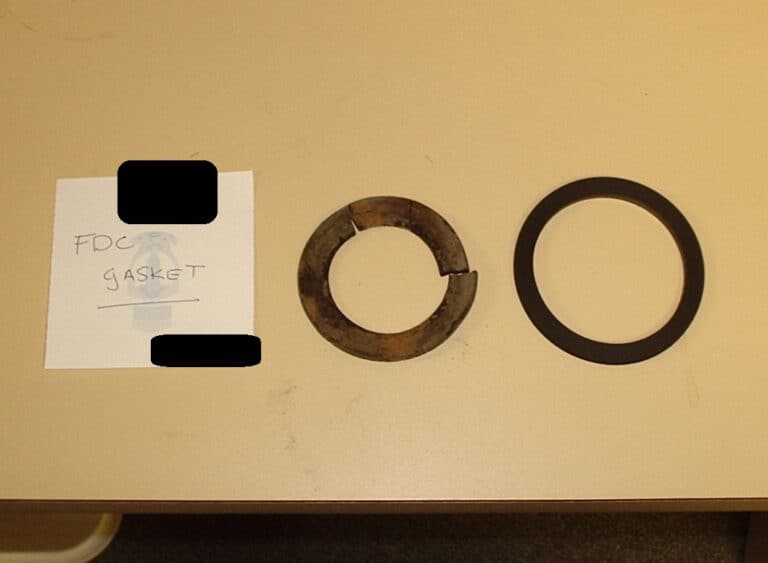 Age and weather can eventually wreak havoc on FDC gaskets within swivels, as illustrated by the one on the left. Image (modified) source: Fire Protection Deficiencies
Age and weather can eventually wreak havoc on FDC gaskets within swivels, as illustrated by the one on the left. Image (modified) source: Fire Protection Deficiencies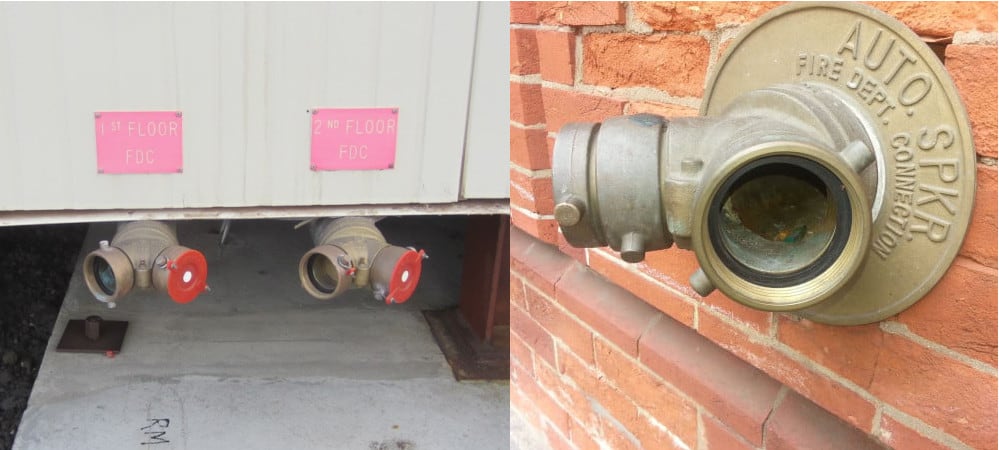 The Siamese connections on the left are each missing a cap (inspection item #3). The one on the right is missing both caps or plugs, and there is a crayon plus other debris in the inlet (inspection item #9). Left image (modified) source: Fire Protection Deficiencies
The Siamese connections on the left are each missing a cap (inspection item #3). The one on the right is missing both caps or plugs, and there is a crayon plus other debris in the inlet (inspection item #9). Left image (modified) source: Fire Protection DeficienciesNote that quarterly item nine, the interior inspection, changes to annually if “approved locking caps or locking plugs are installed” (NFPA 25: 13.8.2). At either interval, any obstructions found during a check must be removed (13.8.4).
If an inspector spots any of the other issues, NFPA 25 requires the relevant parts to be “repaired or replaced as necessary in accordance with the manufacturer’s instructions” (13.8.3).
There is another significant ITM requirement for FDCs: every five years, the “piping from the fire department connection to the fire department check valve” needs a hydrostatic test (13.8.5). A fire protection professional puts extra pressure into the system with a test pump and looks for pressure drops or visible water to identify leaks.
Below, you can read more about hydrostatic testing and additional detail on FDC ITM, including what’s involved in checking supply pipes, check valves, automatic drains, and more:
ITM for a fire department connection involves a quarterly inspection...
Read MoreLearn how and when hydrostatic testing is conducted on standpipes...
Read MoreFDC swivels and their inlets are protected by either a plug, which screws into the hole, or a cap, which sits atop the orifice to cover it. But people also sometimes use these terms interchangeably.
While there are 10 items on NFPA 25’s quarterly inspection list, missing caps and plugs top the list of code violations, along with FDCs blocked by shrubs or objects.
Caps and plugs go missing due to vandals or thieves; the latter is usually when FDC plugs are made of brass that can be resold. FDC swivels can also disappear for the same reason! Some FDC plugs have locks and chains, while other building owners use inexpensive, breakable plastic or aluminum caps to deter theft.
But just like FDC sizes and connection types, you can’t necessarily just choose a cap or plug and lock them—many jurisdictions have specific rules. So, check what your local authorities allow first since firefighters need to access the FDC inlets in an emergency. In addition, many people order the wrong cap or plug because they mismeasure the opening. It’s crucial to measure the inside diameter of the waterway, not the outside diameter of the swivel or inlet!
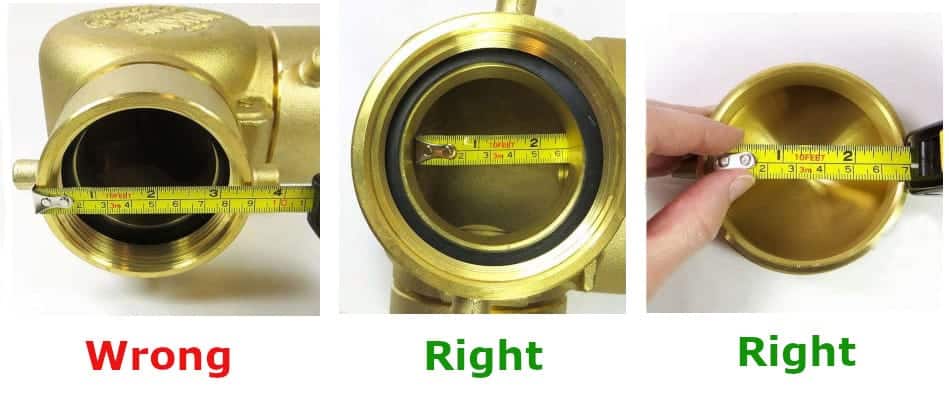
Read these blogs, especially #67 — a step-by-step guide to measuring FDCs — before you buy caps or plugs:
Working Fire Department Connections (FDCs) are essential for many standpipe...
Read MoreIn this article, we help you learn how to select...
Read MoreFDC plugs ensure the effectiveness of a building's fire department...
Read MoreBlockages in a fire department connection can prove catastrophic for...
Read MoreMaintaining an FDC shouldn’t be difficult. Quarterly inspections ensuring fire department connections are visible, accessible, properly marked, and otherwise in good shape cover most of what’s required. And if you ever need a replacement part or new FDC equipment, QRFS has you covered with approved equipment, competitive prices, and fast shipping!
Check out our full selection of FDCs and accessories, including:
If you have questions or need help finding an item, call us at 888-361-6662 or email support@qrfs.com.
Iron fittings come in multiple varieties. Should you choose cast...
Read MoreA sprinkler supervisory switch, whether it’s a flow, tamper, or...
Read MoreLong dry sprinkler barrels can cause a practical reduction in...
Read MoreHardware stores don’t sell fire sprinklers, cover plates, or escutcheons....
Read More